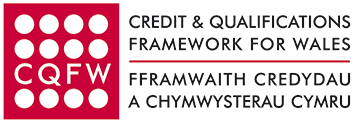| 1. |
Understand anatomy and physiology in relation to moving and positioning individuals. |
|
| 1.1 | Outline the anatomy and physiology of the human body in relation to the importance of correct moving and positioning of individuals. | | 1.2 | Describe the impact of specific conditions on the correct movement and positioning of an individual. |
|
| 2. |
Understand current legislation and agreed ways of working when moving and positioning individuals. |
|
| 2.1 | Describe how current legislation and agreed ways of working affect working practices related to moving and positioning individuals. | | 2.2 | Describe what health and safety factors need to be taken into account when moving and positioning individuals and any equipment used to do this. |
|
| 3. |
Be able to minimise risk before moving and positioning individuals. |
|
| 3.1 | Access up-to-date copies of risk assessment documentation | | 3.2 | Carry out preparatory checks using:
• the individual’s care plan
• the moving and handling risk assessment. | | 3.3 | Identify any immediate risks to the individual. | | 3.4 | Describe actions to take in relation to identified risks. | | 3.5 | Describe what action should be taken if the individual’s wishes conflict with their plan of care in relation to health and safety and their risk assessment. | | 3.6 | Prepare the immediate environment ensuring:
• adequate space for the move in
• agreement with all concerned that potential hazards are removed. | | 3.7 | Apply standard precautions for infection prevention and control. |
|
| 4. |
Be able to prepare individuals before moving and positioning. |
|
| 4.1 | Demonstrate effective communication with the individual to ensure that they:
• understand the details and reasons for the action/activity being undertaken
• agree the level of support required. | | 4.2 | Obtain valid consent for the planned activity. |
|
| 5. |
Be able to move and position an individual. |
|
| 5.1 | Follow the care plan to ensure that the individual is positioned:
• using the agreed technique
• in a way that will avoid causing undue pain or discomfort. | | 5.2 | Demonstrate effective communication with any others involved in the manoeuvre. | | 5.3 | Describe the aids and equipment that may be used for moving and positioning. | | 5.4 | Use equipment to maintain the individual in the appropriate position. | | 5.5 | Encourage the individual’s active participation in the manoeuvre. | | 5.6 | Monitor the individual throughout the activity so that the procedure can be stopped if there is any adverse reaction. | | 5.7 | Demonstrate how to report and record the activity noting when the next positioning manoeuvre is due. |
|
| 6. |
Know when to seek advice from and/or involve others when moving and positioning an individual. |
|
| 6.1 | Describe when advice and/or assistance should be sought to move or handle an individual safely. | | 6.2 | Describe what sources of information are available about moving and positioning individuals. |
|
